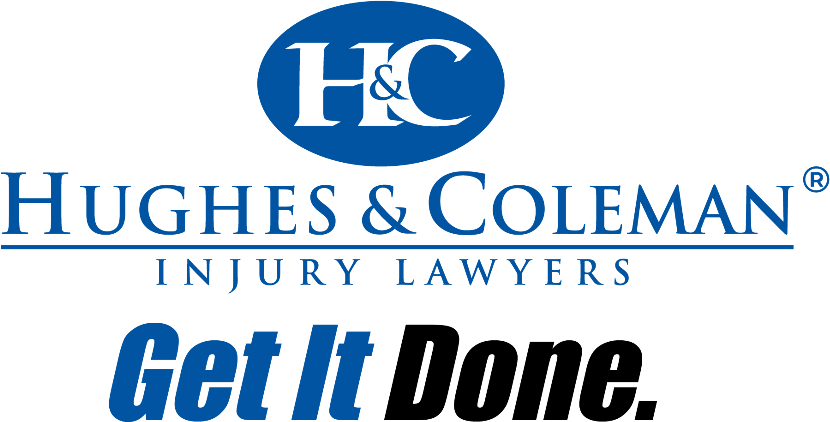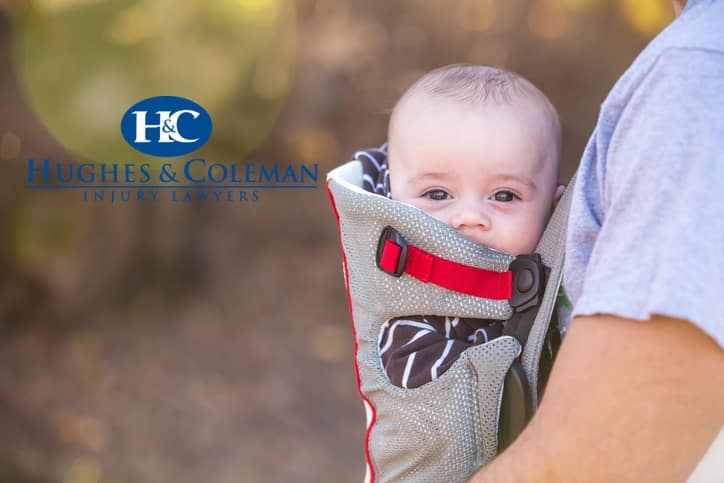-

September is Baby Safety Awareness Month. The event is the brainchild of the Juvenile Products Manufacturers Association (JPMA), who has been hosting it since 1983.
The month is the not-for-profit organization’s largest consumer awareness campaign. JPMA represents approximately 250 manufacturers who make up 95-percent of the prenatal to preschool products on the US market.
“This month-long event increases consumer awareness of safety issues and the safe selection and use of baby products,” said JPMA’s website.
“Whether you are a retailer, manufacturer, industry partner, doctor’s office, or playgroup, you are in a wonderful position to spread the word to parents and caregivers about baby safety throughout Baby Safety Month and all year long.”
At Hughes and Coleman, we care deeply about baby, infant, and child safety. In honor of Baby Safety awareness month, we’ve dedicated each of our September blogs to a different facet of safety for babies and will provide actionable steps each month for parents and caregivers to protect their newborns.
Strap In For Safety
The JMPA has focused the awareness month with the theme of “Strap in for Safety.”
The Centers for Disease Control and Prevention (CDC) reports that a leading cause of injury deaths in children less than 1 year of age is suffocation – actually making up two-thirds of those incidents! Nonfatal suffocation rates were also highest for children under 1 year of age. Children in that age group also accounted for more than 50-percent of nonfatal falls and the highest rates of poisoning.
Almost all of these accidents could have been prevented. The World Health Organization (WHO) said in a news release that “more than 2,000 children die every day as a result of unintentional or accidental injuries. Every year tens of millions more worldwide are taken to hospitals with injuries that often leave them with lifelong disabilities, according to a new report by WHO and UNICEF.”
Their report found that if prevention measures were adopted, at least 1,000 children’s lives could be saved every day. One of these steps included making full use of safety straps.
JPMA’s focus on strap safety – both as a preventive measure against injury and tips for safety when the baby is using the product- would go a long way to reducing those numbers.
Stroller Safety
Strollers are a common baby item. However, the straps inside are less a convenience feature, and more a necessary precaution.
JPMA suggests using straps at all times “even if it’s a short trip” and “regardless of the child’s age.”
“Harness straps stop the child from climbing out of the seat and falling, and protects the child should the stroller tip over,” they said.
It’s also important – especially with newborns because they can’t control their neck muscles – to be sure their airway is never restricted by the straps. Many strollers have a five-point harness system that straps over each shoulder, the waist and the middle of the legs rather than near the neck.
Carrier Safety
Baby carriers and slings are also common baby items, and popular among parents because it allows for use of the hands while keeping the baby close, however, the use of slings can be very dangerous.
In fact, the U.S. Consumer Products Safety Commission (CPSC) cautioned against using any slings for babies younger than four months of age.
“Slings can pose two different types of suffocation hazards to babies. In the first few months of life, babies cannot control their heads because of weak neck muscles,” CPSC said in a press release. “The sling’s fabric can press against an infant’s nose and mouth, blocking the baby’s breathing and rapidly suffocating a baby within a minute or two. Additionally, where a sling keeps the infant in a curled position bending the chin toward the chest, the airways can be restricted, limiting the oxygen supply. The baby will not be able to cry for help and can slowly suffocate.”
There have even been a number of baby sling recalls.
Babywearing International, a not-for-profit organization, promotes using baby carriers of all types and provides cautionary steps to parents. They suggest that the benefits outweigh the risks through the use of common sense by parents.
They advise parents to constantly check the baby’s airway, to ensure the carrier provides adequate support to the baby, check for damage to the carrier, and practice with a “spotter over a bed or couch, or low to the ground until you are completely confident.”
Drop-Side Cribs
Over the years, one of the most recognizable baby items is a drop-side crib, which allows access to one or both sides of the crib with a sliding panel. These cribs have been known to break down, have missing parts, and fall onto infants – causing millions of product recalls and CPSC warnings.
Since 2011, the CPSC has effectively banned drop-side cribs from being manufactured or sold and have recalled millions still out there.
Product Defects and the Law
Despite common sense by parents and warnings by these government agencies, accidents still do happen. Sometimes, they’re because of a defective product.
When most people hear the term “defective product,” they likely think of a manufacturing problem. That is, there is something wrong with this particular product. It does not function or work as intended or it is missing parts or pieces. This type of defect is commonly referred to as defective manufacture or a manufacturing defect. While this definition is completely correct, there are other definitions of a defective product from a legal standpoint.
A defective product action may also happen when the product has a defective design. In these cases, all of the products are designed exactly the same, and there is no error from a manufacturing point of view. Instead, all of the products were designed in such a way that the product is inherently unsafe. A common example might include a lawn mower that failed to have a protective guard to keep users away from the blade.
Sometimes a product may also be considered defective because the instructions did not explain the safe way to use the product. Although these products are not considered defective in the common sense of the word, they may still be defective from a legal standpoint. These cases are commonly referred to as “failure to warn” cases.
Getting Legal Help
Parents that have had their babies injured by a product should consider speaking with a defective products lawyer at Hughes and Coleman to see if they have any legal options.
Many people fail to realize that they have a claim in these situations, which can be a costly mistake.
Product Safety Tips
- Check products before purchase or use on the Consumer Products Safety Commission website at https://www.cpsc.gov.
- Learn more about product safety and Juvenile Products Manufacturers Association products at jpma.org.
- When buying, look for the JPMA Certified Logo to be sure the product is safe and meets international ASTM Safety Standards
- If choosing to use a baby carrier, consult tips from Babywearing International and consider attending a meeting for training.
- When buying a car seat, follow the National Highway Traffic Safety Administration’s help guide in their “Parent’s Central” web page.
Get In Touch Today!
We offer free consultations 24/7 and there will always be someone here to take your call. Call our personal injury lawyers today for a free consultation or fill out this form and we will contact you.
We serve clients across Tennessee and Kentucky and we have several offices throughout both states. See all of our locations and contact us today.


